
army historian
-
Posts
1,543 -
Joined
-
Last visited
-
Days Won
3
Content Type
Profiles
Forums
Blogs
Gallery
Events
Store
Posts posted by army historian
-
-
looks like an austro-hungarian combat leadership badge
Yes Eric, it does look like a Hungarian 1922 Combat leadership badge - except for the knob at the top of the badge in the photo. Thanks Captain Albert
Also I apologize if I offended anyone - yes it is frustrating sometimes - I have been working on this photograph off and on since 2005.
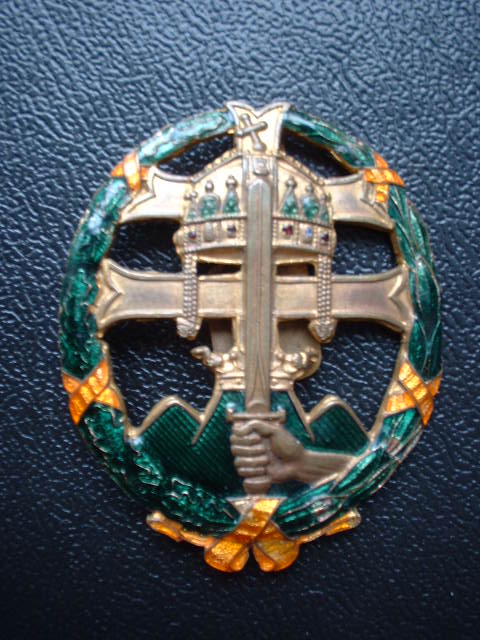
 0
0 -
ohhhhh...the Ricks have been busy!
It is quiet but frankly the last 4 months for me have taken off in a variety of ways. I hope to be more active once the holidays are over.
NO! not everything has been identified!!!!! I am still trying to identify a WW1 Austrian Oberlieutenant wearing a Bavarian Order of Military Merit possibly 4th Class with swords. I guess no one has an award roll for the Bavarian Order of Military Merit 4th with swords. Also no one seems to be able to Identify his mysterious Breast Badge. I guess if it is not German, no one cares. George in Eureka.
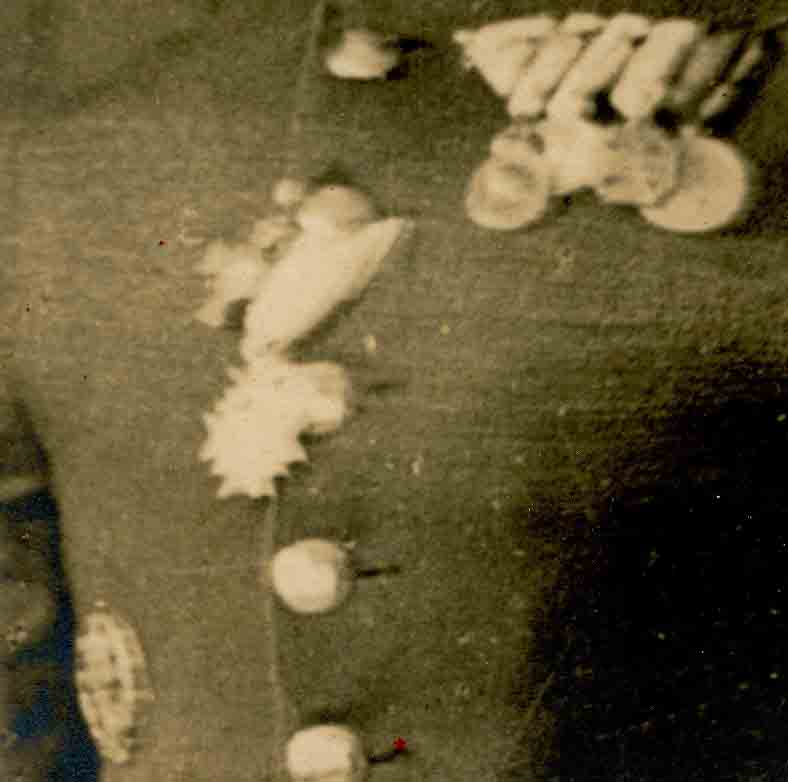 0
0 -
Another question - Does the LI - GI on the brooch identify a maker? If so, who?
Thanks,
Hugh
Yes - All Government certified US Medal producers have codes. Here are a few: Wolfe Brown, and/or W-22; Vanguard and/or V-21-N; Graco-G1 and/or G27-G1. Graco started producing the California State National Guard / Air Guard 10 year Service medals in the late 1990's early 2000's. I do not know when Graco started producing military medals. His Lordship Products has "HLP". I have not gown in depth on makers, except my article on the California 10 year Service Medal. See: http://www.militarymuseum.org/CASM.html Cheers Captain George Albert
0 -
Sorry, You have a newer frame "Bancroft Zephyr". Name goes back to WW2. But the inside of the cap has "Over 50 years" so is not WW2 frame or cover (removable), also possibly the black ribbon band. The Cap Eagle insignia could be WW2 - but that style is still produced today, the chin strap could be WW2. You still did not do badly - that cap is worth $30 to $40. If you are interested in old US head gear (Army and Navy) let me know, I have a very large collection, and prices would be reasonable. Also open to trade. email me for details. Captain George Albert
0 -
Noor, the last ribbon is the same as #5 but without the device. Cheers Captain Albert
0 -
Noor, First ribbon bottom row is Inner-Allied World War 1 Victory Medal. Cheers Captain Albert
0 -
Noor, The First is the Order of the Lion of the Netherlands; then the Order of Orange Nassau; I don't know the next 4; the Center third row is Belgium Order of the Crown: I do not know the next two: then the Japanese Order of the Sacred Treasure; I do not know the next three; France Legion of Honour; the next blue ribbon may be Portugal Order of the Tower and Sword; the last ribbon is the Order of the British Empire Military Division. Very Very nice ribbon bar or Rack as we call them. Captain Albert
0 -
As I said I do not know if this is the proper location to seek help in identifying an Austrian Oberlieutenant wearing a Bravarian Order of Military Merit probably 4th Class without crown? See scan. I have been told he is an Artillery Officer. He has a Badge on his right side that looks like a 1916 General Flying Badge. If anyone has a roll for the Bavarian Order of Military Merit 4th with swords can they check for an Austrian Oberlieutenant, please. I would very much like to ID This Officer. I do not know if the Austrians and Germans were like the United States. The Americans usually used Artillery Officers as Observers in WW1. That would explain the Ballon Pilot/Observer/Crew Badge of 1916, with white enamel wreath and his being an Artillery Officer. Thanks, Frustrated in Eureka.
He is wearing on Bar: Sigmum Laudis Gilt; Sigmum Laudis Silver; Karl Troop Cross (1916); Austrian Single Wound Medal.
In Button hole: Austrian Merit Cross with Crown; Bavarian Order of Military Merit 4th Class with Swords.
Right side of Tunic: What looks like a 1916 General Flying Badge.

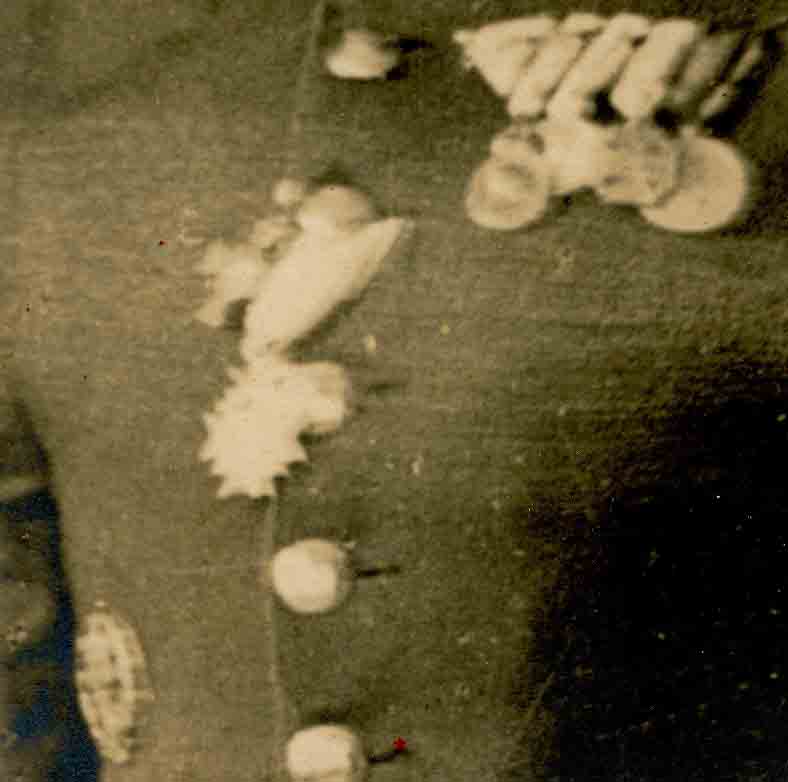 0
0 -
Great Group, and nicely researched and documented. Cheers Captain George Albert
0 -
Very very nice research - Great Job. Captain Albert
0 -
Pleas note the chin strap has decorated edges like present straps! I have owned civil war kepies, thay have plain tared chin straps. The eagle in front on the cap is a full colonel's - somewhat recent. Impossible photograph. See photograph of a 5th Infantry, 1868 - Bent and Bush cap.
Captain Albert
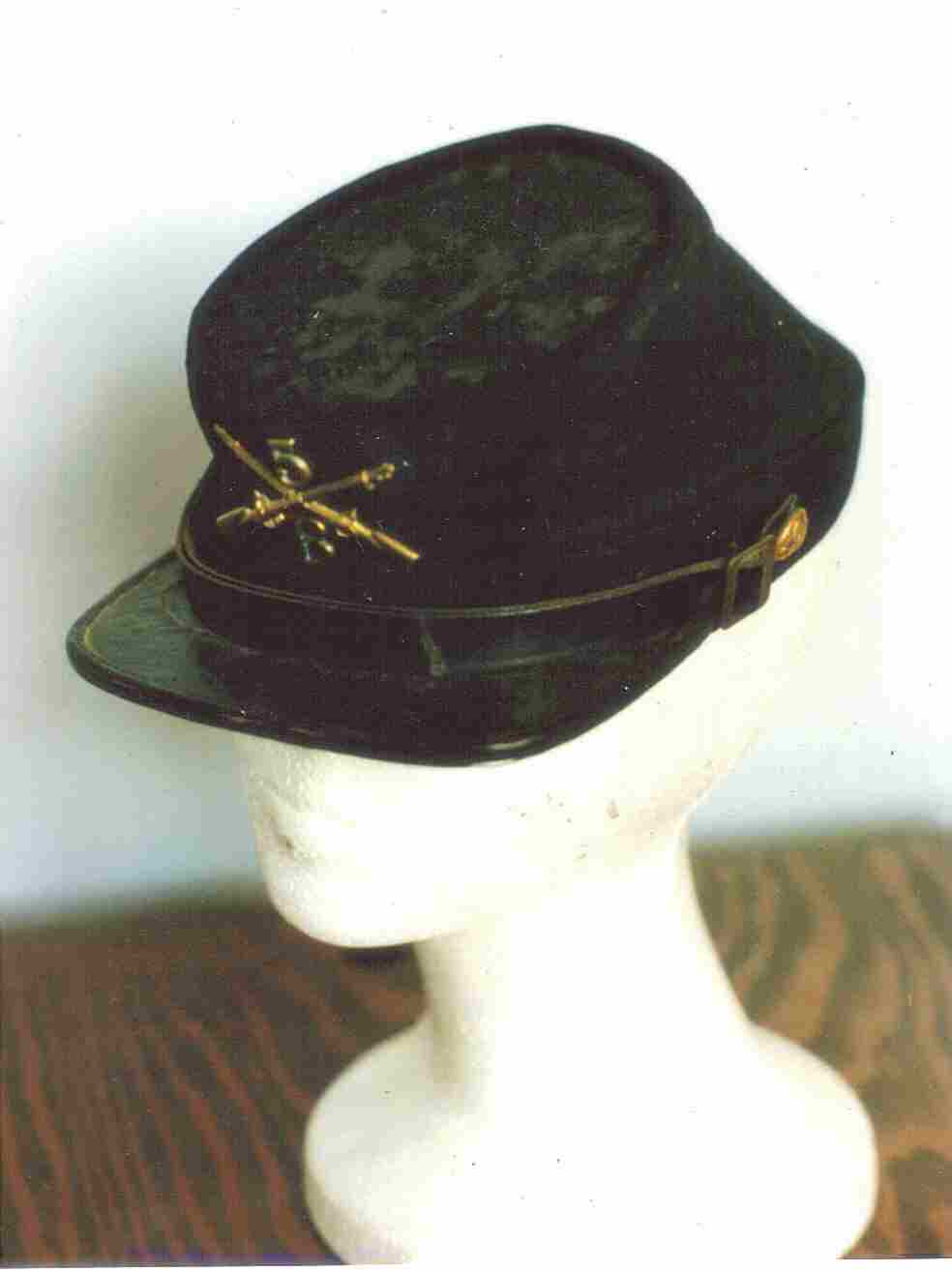 0
0 -
Thanks, I was very lucky, with a little work. George
0 -
I could not add this. So new topic. William Telfer is marked with red X above him. Captain George Albert
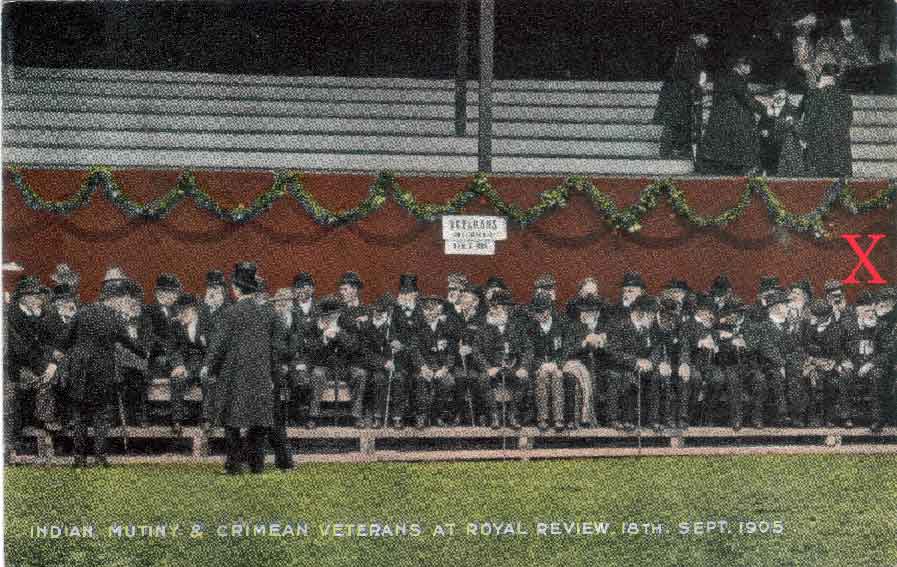 0
0 -
For a history of William Telfer see "Sergeant William Telfer" in this section.
This does not happen very often, I would have to say this is a one in the million. I have been lucky finding images of relatively recent people -exceptions are Konteradmiral Walter Koehler, who is in a Bundesarchive photo as a Midshipman in a group photo (1903-04) on the S.M.S. Hertha at Tsingtao, but he died in 1970 and was relatively high ranking. The same applies to a number of U.S. groups.
This is a case of finding a British SGT. born in 1831 died post 1908. He was not noteworthy (No valor decorations, nor an extraordinary or unique medal grouping). He was an enlisted man. The chances of locating a picture (in any condition) of this man have to be one in a million. Well to make a long story short - here is what happened. I bought this group of 4 medal, and 2 parchment documents in May 1999. I have done a lot of research on the man (25+ pages). I bought a postcard of Crimea and Indian Mutiny Veterans at the Royal Review of 1905 from a dealer in England in Apr 2001. I though it was a nice display piece, and nothing more. I did examine it, but back then you couldn't get a very good high resolution scan. On top of that the postcard was printed (dot pattern - like a newspaper).
This week I was thinking of selling this group, because I specialize in photographic documented groups, and this did not fit in. I figured I would make one last try at analyzing the postcard. I broke the card into 4 sections scanned at 4800 dpi. I knew that Telfer was still alive in 1908 from a 79th Highlander News Letter. There were 250,000 British Crimea Medals awarded, so this was a real long shot. Then I analyzed the veterans. I found only one wearing a Glengarry cap (Scottish), with what looked like a white or white topped hackle. The Glengarry cap was introduced as the undress cap for Scottish Regiments in the year 1852. This head-dress was of blue cloth with a diced border (red and white), except for the 42nd, 71st and 79th Regiments, who wore a plain blue Glengarry. The cap was bound at the bottom with black silk and on the left side was a black silk rosette or bow on which was fixed the regimental badge. The tails were also of black silk.
So I had one Scottish soldier (from the Glengarry cap, probably from a Highlander Regiment) with a white or white topped hackle. There were only 8 Regiments of foot Highlander Regiments in the Crimean War (the 3rd Scots Guards, the 1st Royal Scots, 42nd Black Watch, the 71st Highland Light Infantry, the 72th Highlanders, the 79th Cameron Highlanders, the 90th Highlanders, and the 93rd Gordon Highlanders). The man in the postcard is wearing the Glengarry cap without dicing so he was in the 42nd Black Watch, 71st Highland Light Infantry, or 79th Cameron Highlanders. The 71st Highland Light Infantry only earned one bar (Sebastopol). The 42nd wore a Red hackle (in a black and white photograph red appears black). This leaves only the 79th Cameron Highlands. Telfer had served in the 79th in the Crimea, and India Mutiny. I could only find one veteran wearing 4 medals. This veteran was the one wearing the Glengarry cap! I enlarged this veteran and it appeared that he had two medals with ribbon brooches (silver rectangles similar to Telfer’s), one medal (looks like the India Mutiny by the ribbon did not have a brooch bar, and the 4th was mounted below the top three, and hard to see.
In the postcard this man appears he is wearing the British Crimea on a long ribbon (3-4 bars), possible, with ribbon brooch Turkish Crimea on shorter ribbon with ribbon brooch, India Mutiny on longer ribbon with no ribbon brooch, and the Long Service and Good Conduct Medal centered below the first three, not overly displayed. When I bought this group it had 4 silver ribbon brooches, one for each medal (see photo) – these medals appear to have original ribbons (c. 1900s). The ribbon brooch bars for the India Mutiny and Long Service and Good Conduct Medal had broken mounting pins and still do! After all this I came to the conclusion the veteran in the Glengarry cap with 4 medals of which two had ribbon brooch bars (British Crimea and Turkish Crimea), and at least one did not have a ribbon brooch bar (India Mutiny), and the last was unknown as to having a brooch bar or not (Long service and Good conduct Medal), was in fact SGT. William T. Telfer, wearing his original Glengarry cap, at the age of 74 attending the Royal Review of 1905 in Edinburg. The Royal Review was held in (the King’s or Queen’s Royal) Holyrood Park, Edinburg Scotland. Telfer was living in Dunfliers only 73.4 miles from Edinburg at this time again the 79th Highlander news letter of 1908. A further note: Telfer left the 79th in 1860 for civilian life. He did not do well, so re enlisted in the 43rd of Foot. Many men that left a unit would not go back to that unit because of a certain amount of shame at not being able to make it in civilian life, therefore the Long Service and Good Conduct Medal was not prominently displayed by Telfer.
Scottish Foot Regiments in the Crimean War:
Scots Fusilier Guards: now the Scots Guards, diced bands.
1st Royal Regiment: Royal Scots, diced bands.
42nd Royal Highlanders: The Black Watch, no diced band, red hackle.
71st Highland Light Infantry: no diced band.
72nd Highlanders: Seaforth Highlands, diced band.
79th Highlanders: Cameron Highlanders, no diced band, white topped hackle.
90th Regiment: later the Scottish Rifles; diced band.
93rd Regiment: Gordon Highlands, diced band.
The vast majority of the Scots Fusilier Guards received 4 bar Crimea medals.
The 1st Royal Regiment received thee bars (Alma, Inkermann, and Sebastopol).
The 42nd Royal Highlanders, in the Crimea were part of the Highland Brigade with (79th , and 93rd Regiments). All 3 Regiments received three bars (Alma, Balaklava, and Sebastopol).
The 71st Highland Light Infantry only received the Sebastopol bar.
The 72nd Highlanders receiver 4 bar Crimea medals.
The 79th Highlanders, In the Crimea part of the Highland Brigade with (42nd, and 93rd Regiments). Received 3 bars (Alma, Balaklava, and Sebastopol).
The 90th Regiment only received the Sebastopol bar.
The 93rd Regiment in the Crimea part of the Highland Brigade with (42nd, and 79th Regiments). Received 3 bars (Alma, Balaklava, and Sebastopol).
The 42nd’s hackle was Red, so it does not appear to be the man in the postcard
The 71st Highlanders were at the Siege of Sebastopol from September 1854 and the Kerch Expedition to Eastern Crimea from May to June 1855. They only received the Sebastopol Bar. It does not appear that the man in the postcard was in the 71st .
This leaves only the 79th Cameron Highlanders.
Captain George Albert
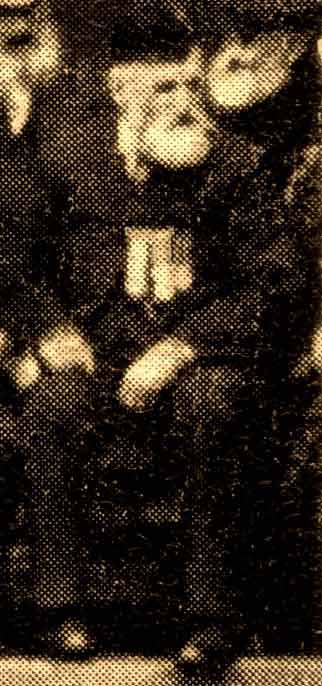
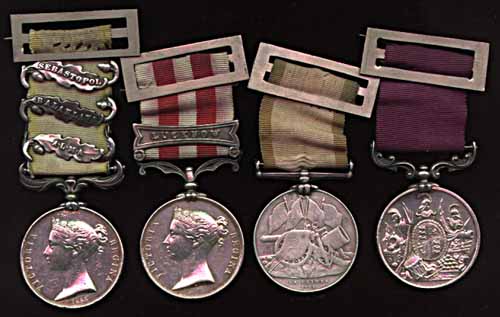 0
0 -
I have this colorized Postcard: Albany series #2984, unused “Indian Mutiny & Crimean Veterans At Royal Review, 18th Sept. 1905.” I would very much like to locate a high quality scan or copy of the original photograph. Any help would be appreciated.
Respectfully
Captain George Albert, California state Military Historian
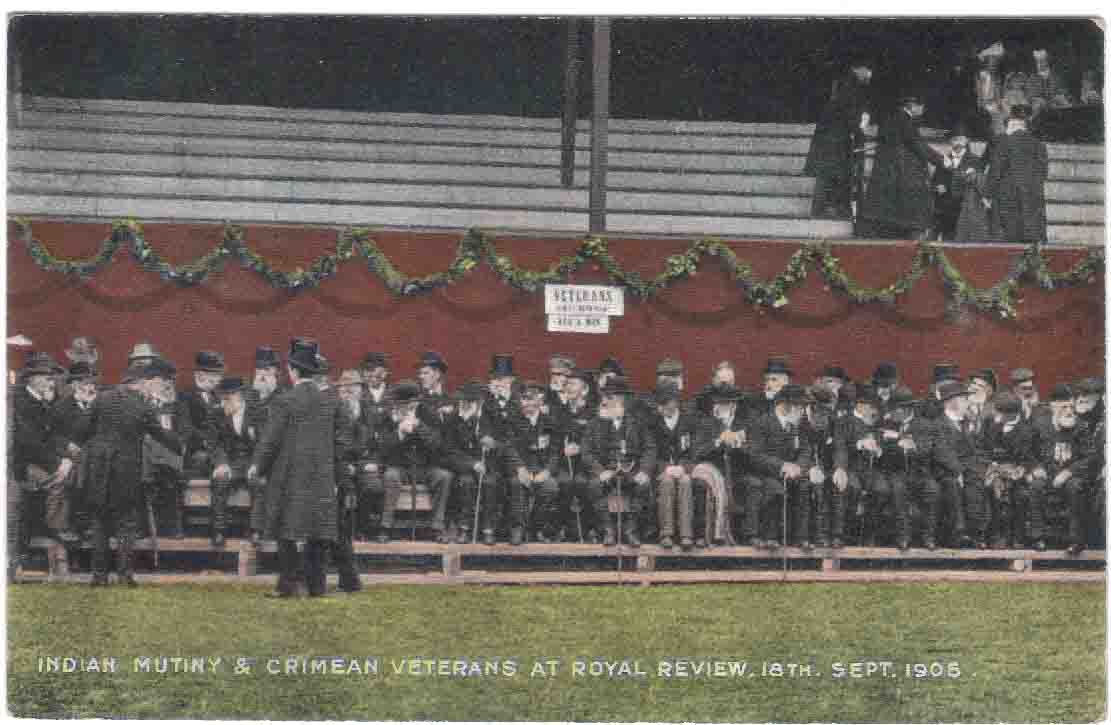 0
0 -
I posted this request under photographs, but I believe I should have posted it here, Sorry for the duplication. I am trying to figure out this photograph. I believe the Officer in the center maybe Konta Admiral Walther Koehler (wearing Kapitan type visor cap). Could be 1939-1941. I am not sure of the location, but it maybe the Port of Hamburg. Any help would be greatly appreciated. Cheers Captain George Albert
0 -
Yep, through your flotilla materials officer or the CG aux system.
Any US retired Serviceman can order (cheap) minature, regular medals, ribbon bars and attachments. either the Navy/Marine Exchange or the Army/Air Force exchange. Let me know what you are looking for, and I will check. Cheers Captain George Albert
0 -
Paul
You might try Orders and Medals Society of America (OMSA) ribbon bank. Also there is a dealer in England who has a lot of different countries ribbons for sale. Can't remember his name - try search google "medal ribbons". Good Luck, Cheers Captain George Albert
0 -
I have 2 US submarine groups. One to my uncle See Noor's posting "best researched item", and one to a maverick Lieutenant (1973-1995).
- Gold (Officer) Surface Combat Badge
- Silver (Enlisted) Submarine Badge (Dolphins)
- Silver SSBN Deterrent Patrol Badge
- Navy Commendation Medal with Gold Star (2nd award)(named “Tommy L. Couch”) with presentation case
- Navy Achievement Medal with 4 gold stars (5th Award) (named “Tommy L. Couch”) and lapel pin
- Navy Meritorious Unit Citation with bronze star (2nd award) (1 Sep 1981)
- Navy Efficiency Ribbon with 2 E’s (2nd award)
- Navy Good Conduct with bronze star (2nd award) ( named “Tommy L. Couch 1978”) second award c.1982
- National Defense Service Medal with Star (Vietnam and 1990 awards)
- Navy Expeditionary Medal (Jan 1981 Iranian Crisis)
- Armed Forces Expeditionary Medal with star (Arctic 1976-Classified) and Op Ernest Will (Persian Gulf 1987-1990)
- Navy Sea Deployment Service Ribbon with 3 bronze stars (4th award)
- Navy Career Counselor Badge
I also have his Dress Blue Uniform. One problem no picture!
Here is his group, Cheers George
0 -
-
Thanks for the post. Some more information:
N.Y. Times: Army Orders 26 Sep 1917 – Signal Corp Reserve lists: Schermerhorn, Capt. S. S. V. Aviation Section previous orders amended so as to direct him to report to Camp Taliaferro, (Fort Worth) Texas.
N.Y. Times: Army Orders 6 Sep 1918 lists Schermerhorm, S. S. promoted from Captain to Major Air Service Reserve.
19 Nov 1920 to 18 Nov 1923 and 19 Nov 1923 to 9 Jun 1925, He was assigned to the 91st Aero Squadron (Observation) at Ross Field Arcadia, CA. Ross Field is where he retired as a Master Sergeant with at least 21 years service.
I also got with the uniforms an old black leather flying cap and a set of WW1 US flying goggles.
The National Personnel Records Center said he was awarded the WW1 Victory Medal with bar: "Defensive Sector".
Thanks again George Albert
0 -
Hello, I have 3 uniforms and some insignia from a Spanish American War through 1925 serviceman. He enlisted in Apr. 1898, served in the Philippines, and China 1900-01. He was discharged in April 1907 as a Electrician First Class from the signal Corp. He re-enlisted in 1913 at Fort Omaha with the Signal Corp. He appears to have been a weatherman. He was commissioned a Captain in the Signal Corp Reserve in 1917. He was promoted to Major Air Service Reserve. Reverted to Master Sergeant Air Corp 1920. My question is: I know he was "relieved from regular and frequent flights" by War Department Special Orders (he was 37). Since he was a weatherman and was in flying status (before the Special Order) would he have qualified for the half wing (observer) badge? Weatherman flew as observers (weather) at that time. I tried to get info from the National Personnel Records people, by his records were destroyed in the 1973 fire. They rebuilt his record, but only showed 3 periods of service: 1913-1917 (nothing as an officer) 1920-1923, and 1923-1925. They did say he was awarded the WW1 victory medal with Defensive Sector Bar. Note: no overseas chevrons on WW1 Officer, or 1925 master sergeant uniforms. I also have not been able to locate the criteria for award of the Observers half wing. No definition as to if weather observation would count. Thanks Captain George Albert
0 -
PVON
I posted a topic "Ship survivors" and there wasn't much interest. I have in my collection 4 groups (medals - documents) to ship sinking survivors. #1. (My favorite) is a German Naval group to a Rear Admiral z. V. (Acting) who served on the Light Cruiser S.M.S. Leipzig, at the Battles of Coronel and the Falklands. He was one of 18 survivors of the Leipzig, and the Ranking Officer. He retired from the German Navy in 1932, and was recalled in 1941. He retired again 31 Dec. 1944. #2. Is another German WW1 Naval Medical Officer who served on the Light Cruiser S.M.S. Karlsruhe which exploded in Nov. 1914. He was was one 129 survivors from the ship. #3. Is WW2 U.S. to a BM3 who served on the USS Bismarck Sea CVE-95, which was sunk by kamikazes. He was one of 605 survivors - 318 died. #4. Is a small WW2 German group to the First Officer of the Merchant Ship General Osorio. He served on the Blockade Runner MS Porto Alegre and was awarded the War Merit Cross 2nd Class with swords, and Blockade Runner Badge. The General Osorio was sunk in Kiel in 1945, by Allied aircraft. I do not yet know if this man survived or not. Cheers Captain Albert
0 -
Noor, If a U.S. soldier, sailor or airman only received foreign awards, he would not be able to wear them on uniform. He must have at least one US ribbon or medal. This is from the regulations. Cheers Captain Albert
0


A very good quality COPY of MMTO Kommandeur – Kreutz
in Austro-Hungarian Empire
Posted · Edited by army historian
Very beautiful, and great quality copy. As good as a jeweler's copy! Captain Albert